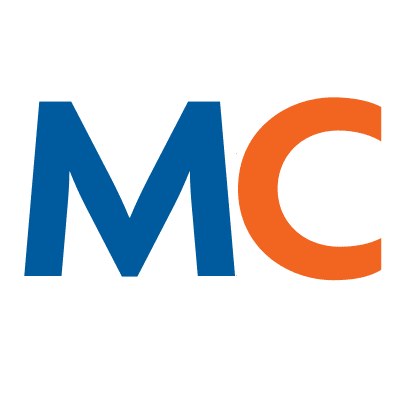- Solutions
- Solutions
- Home Health
- Hospice
- Life Plan Community
- Palliative Care
- Private Duty
- Senior Living
- Skilled Nursing
- Skilled Nursing
- Skilled Nursing Software
- Advanced Insights
- Customer relationship management
- Data and analytics
- Financial & operations management
- Marketing
- Nutrition management
- Referral management
- Regulatory compliance
- Retail management
- Resident engagement
- Revenue cycle management
- Skilled nursing interoperability
- Partners
- Blogs
- Resources
- About
- User Conference

The American Jobs Plan: Pros and cons for long term care
The American Jobs Plan (AJP) portion of the Build Back Better Act (BBB) includes the provision for “$400 billion in strengthening home-and-community-based services for older people.” Is this good news for the long-term care industry? It’s complicated.
Pros and cons: American Jobs Plan
On the plus side, the legislation certainly strengthens our “care” economy by creating jobs and raising wages and benefits for essential long-term care providers. Many of these workers are women of color who have been underpaid and undervalued for decades. Increased funding will help improve existing care environments and create new and better jobs for caregivers while providing home and community-based care for individuals who might otherwise have to wait for the services they need and deserve.
The plan would also pave the way to improve economic security and access to healthcare for seniors and those with disabilities, along with enabling more patients to be at home for as long as possible. COVID really brought this to light when we had to answer the question: how do you care for patients when they can’t go to a facility, or they can’t get to adult daycare or an assisted living facility?
In February of this year, however, the administration also created the nursing home reform package. The new legislation is somewhat of a counterpoint to the proposed benefits in the AJP and BBB. The reform states that all people deserve to be treated with dignity and respect and to have access to quality medical care and that:
- Every nursing home provides enough staff who are adequately trained to provide high-quality care.
- Poorly performing nursing homes are held accountable for improper and unsafe care and immediately improve their services or be cut off from taxpayer dollars.
Therein lies the rub. By “cracking down” on nursing homes, the administration is also creating overly burdensome staffing requirements that are very punitive at their core. Some experts contend that the reform package could end up doing more harm than the good it intends.
Nursing homes are already struggling with staffing shortages
Is penalizing nursing homes for not having sustainable staffing levels the right thing to do? While the AJP and BBB intend to allocate a lot of money towards what is hugely beneficial for patients, the skilled nursing facilities (SNF) that are already struggling from staffing issues are now going to suffer from potential financial penalties. Losing census in the facilities side to home care may benefit the patient, but where does it leave the facilities?
Let’s look at the bigger picture. As the care continuum goes from home care to an assisted living center to a nursing home, it’s weighted heavily on home care (which is great for the patient) but it leaves facilities and facility providers in a tenuous situation. Not only are they struggling to find staffing and may be subject to financial penalties, but they are also facing financial shortages as census levels haven’t reached what they were before COVID.
Let’s also remember that a lot of nursing homes and associations realized that when the current administration released this nursing home reform package that it was placing the blame on nursing facilities for poor care. That’s just not the case. Care is generally very good across the spectrum. Strict regulations set by the Care Quality Commission ensure staff at nursing homes are required to undergo mandatory training. Most nursing homes (and most adult daycare centers) are filled with people who have a passion to care for others.
Supporting technology can be a game-changer in long-term care
The long-term care situation is complicated, but there is some good news. Companies, like MatrixCare, are technologically supporting the care continuum for patients from pediatrics to senior care all the way to hospice/palliative care. With COVID changing how facilities operate financially, tech companies are making it easier for both administrators and staff to manage their day-to-day workload, no matter where they are in providing long-term care.
Partnering with the right EHR software provider can help bring in and retain staff while also streamlining workflows, so more focus can be placed on the resident. Instead of trying to figure out the new technology, you can put it to work for you. Consider undertaking an audit and discover where you are in terms of staffing levels, tracking quality metrics, and current workflows. The right partner can identify areas where you can improve overall operational efficiency. Providers can leverage the insights to make better, more informed decisions about their patients, residents, and business.
It all boils down to data. Looking at what you are doing and how it can be improved just through an alteration of the workflow and information processing – so facilities can leverage solutions that are already out there, but they do not know exist.
The functionalities are there. The data is there. It’s now about providers taking advantage of it. By doing so, they can pull their facility out of the mire, improve their performance, upgrade their scores and census, save money, and ultimately take better care of patients or residents.
MatrixCare continually innovates so our customers can do good and do well. Ask us how we can partner with you during this challenging environment of financial penalties, regulatory restrictions, and more.
See what MatrixCare can do for you
Jenny Lee
Jenny Lee is a health care regulatory expert with more than 15 years of experience. After working for the Brookings Institution and various specialty medical organizations, including ASCRS and the National PACE Association, she joined MatrixCare as its Regulatory Compliance Manager, to ensure that all its technology solutions remain compliant in the ever-changing health care market. She is excited by MatrixCare’s continuous opportunities for innovation to support patients and providers in the long-term care space.
Related Posts


See MatrixCare in action
Start by having a call with one of our experts to see our platform in action.
MatrixCare offers industry-leading software solutions. Thousands of facility-based and home-based care organizations trust us to help them improve efficiency and provide exceptional care.
© 2025 MatrixCare is a registered trademark of MatrixCare. All rights reserved.






